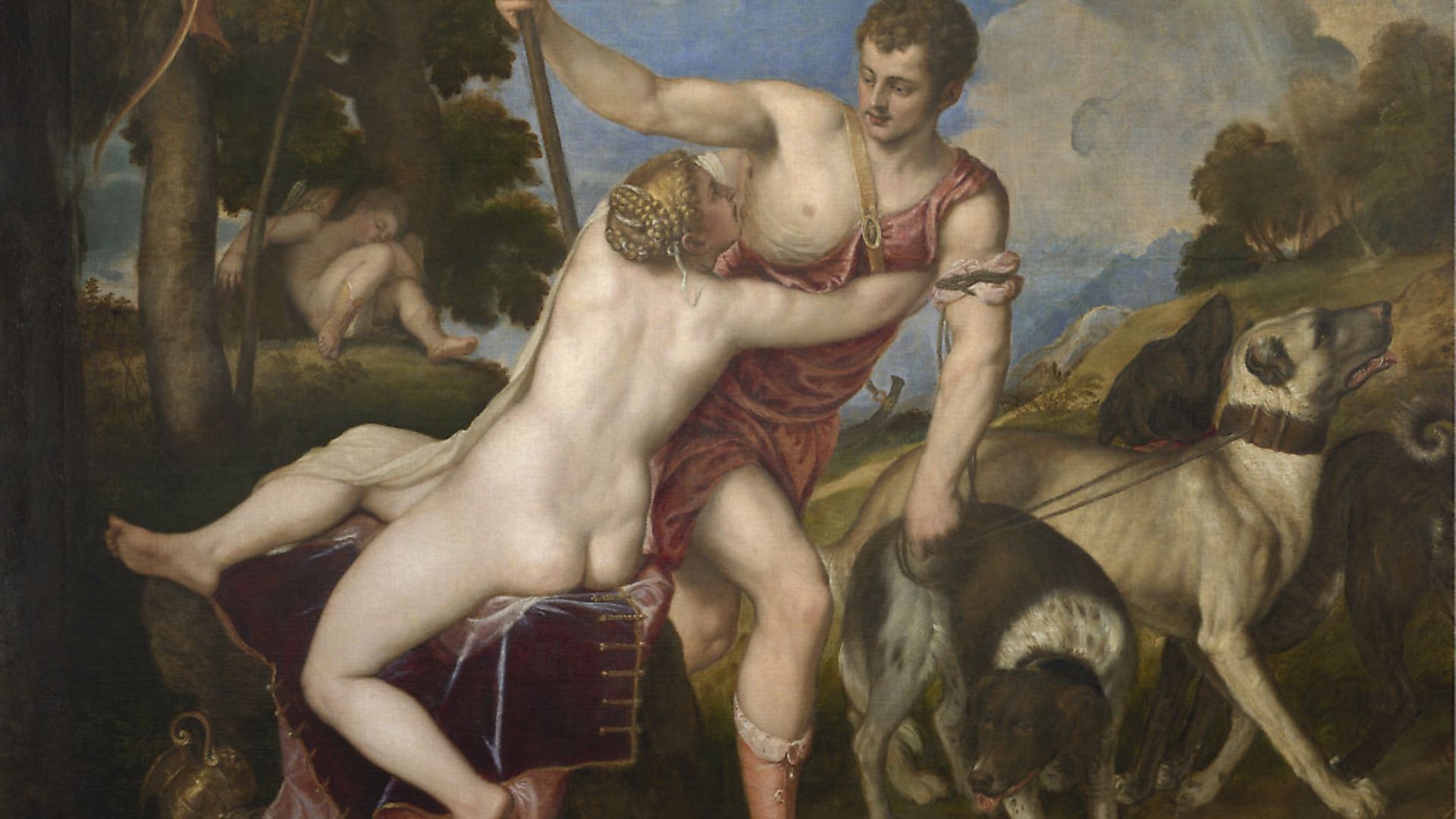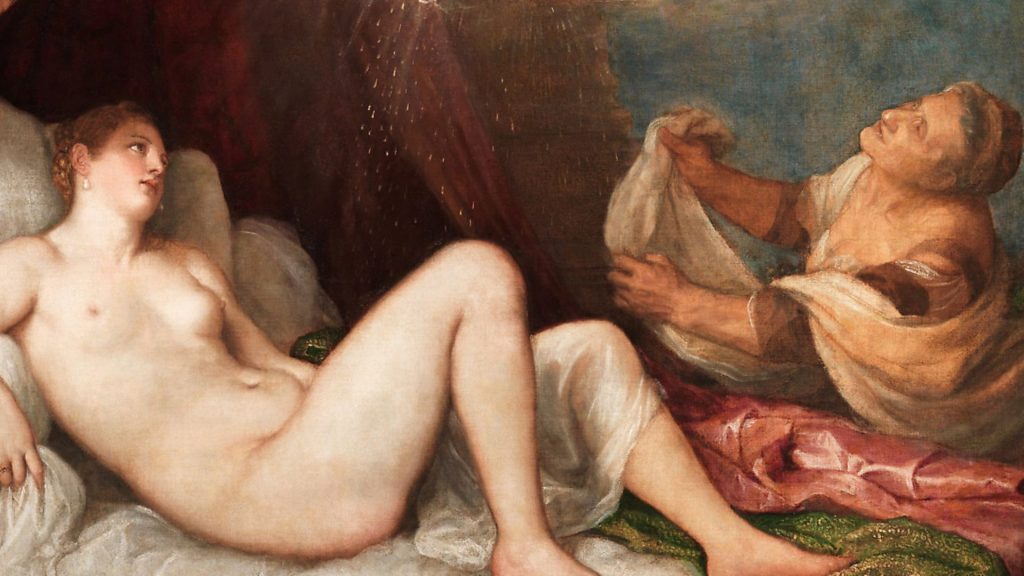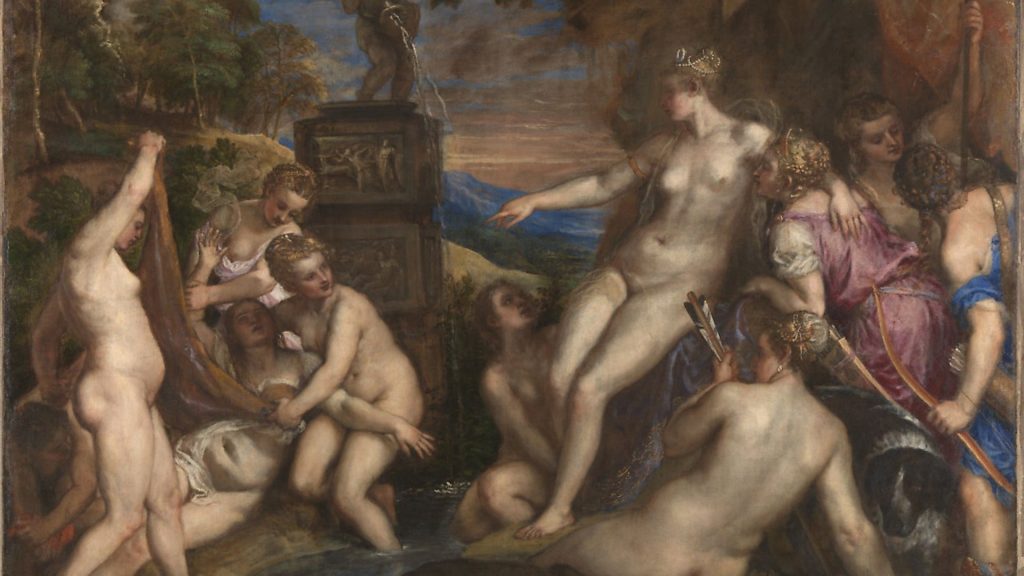
CLAUDIA PRITCHARD on an epic Titian blockbuster exhibition almost 500 years in the making – for which we will now have to wait a little longer.

The memo from the artist Titian to Philip II of Spain just before Christmas in 1574 is businesslike and ingratiating, and concludes with a list of paintings that he has sent to His Catholic Majesty over the past 25 years. It is not, he admits, a complete list, ‘as I cannot remember them all’.
He cannot remember them all… Today – or, at least, up until March this year – art-lovers travel half way round the world to see a Titian.
Other artists revere him, centuries of scholars have studied him and gallery directors treasure his work if they are lucky enough to have one or more pieces in their collections.
Indeed, so awe-inspiring are the paintings, that a once-in-a-lifetime project to reunite six canvases at the National Gallery, cut short by measures against Covid-19, is nevertheless a landmark occasion.

And while visits to Titian: Love Desire and Death are suspended, a magnificent catalogue including such detail as Titian’s beautifully written letters, is valuable homework. So, too, are lectures on each painting on the National Gallery’s Facebook page, and a BBC documentary, Titian Behind Closed Doors.
The Poesie is a set of six paintings connected to but not solely inspired by the Metamorphoses of Ovid. Each tells a succinct story of transformation, but also reveals the passions of the prince for whom they were created.
Female flesh and hunting were high on Philip’s own list, and Titian, with his skill for flesh tints, dynamic compositions and vivid scene-setting was the man to cater to those tastes.
Titian – Tiziano Vecellio (c1490-1576) – was the leading artist of his day and court painter to Charles V of Spain when he first met the king’s heir, Philip, in Milan in 1548.
The prince was on the grand tour through the Holy Roman Empire. Wily and adaptable, the painter had celebrated with paintings of political grandeur the reign of Charles, who knighted him.
In Philip, who would reign as Philip II of Spain from 1556 until 1598, he detected a man with more interest in aesthetics. Soon patron and artist were planning works together.
A fashion for cycles of paintings and tapestries had been forged at the beginning of the 16th century, and Titian, when younger and relatively unknown, had completed three Bacchanalian pictures for Alfonso d’Este, in Ferrara.
When he set about the six vast, square canvases for Philip, he envisaged again a single room for their display, but it is unclear where or whether they ever hung all together.
They were trundled around Philip’s many palaces, some going to London after his brief marriage in 1554 to Mary Tudor that ended with her death four years later.
Changing hands over the centuries, they have been reunited over the same four walls for the first time, converging on London, which holds two of the six, at the Wallace Collection and Apsley House.
Two more sashay between London and Edinburgh, and a fifth is at the Prado in Spain.
But it is The Rape of Europa, which normally resides at the Isabella Stewart Gardner Museum in Boston, Massachusetts, that is the least familiar to European art-lovers, and a masterpiece that is simultaneously thrilling, shocking and whimsical.
This abduction of Europa by Jupiter, disguised as a bull, was set at sea by Titian, the bull splashing through the water, hellbent on reaching Crete, with grotesque sea monsters in his wake.
Putti tumble into the scene, while helpless maid servants gesticulate on the shore.
The whole is a dizzying affair, and it is easy to understand the passion for this addition to her collection by the wealthy American who acquired the picture in 1896.
At £20,000 it was then the most expensive picture in the US, and possibly bought only because Gardner was on the rebound, having just missed out on Gainsborough’s The Blue Boy.
Normally viewed above furniture at her Venetian-style palazzo in Boston, where the collector’s original hang is strictly adhered to, and considered the most important Old Master in the United States, The Rape of Europa on a wall of its own in London and reunited with its companions, is a sight worth waiting for while the exhibition is on hold.
The sequence opens with the erotic Danaë, artfully designed to quicken the royal pulse.
The version in the Duke of Wellington’s collection at Apsley House, London, is now recognised as the correct companion to the other five paintings, although for many years the Prado’s Danaë was thought to be the opening painting in the set.
Apsley House’s Danaë was cut down, and so it is an invisible Jupiter who impregnates a receptive, dreamy nude with a shower of gold, an older servant catching stray gilded drops in her apron.
Perseus, who will be born of this union, grows up to fulfil the oracle’s prophesy by killing his grandfather, the King of Argus, albeit accidentally, with a discus.
The goddess Diana, in two pictures jointly owned by the National Gallery and National Galleries Scotland, is a long way from this supine consort.
Furious at being discovered bathing by Actaeon, the goddess of hunting turns the accidental voyeur into a stag, which will be torn apart by his own hounds.
The goddess’s operatic rage in Diana and Actaeon (1556-59) burns out of an alluring tangle of golden locks and pearls.
She is incandescent again in Diana and Callisto, when her handmaiden, bathing nude, is revealed to be pregnant – by Jupiter, of course, who disguised himself as Diana herself when he made his move.
Callisto and her son, Arcas, will be transformed into two constellations – Ursa Major, the Great Bear, and Arctophylax, the Herdsman.
The two Diana pictures, now jointly owned by the National Gallery and National Galleries of Scotland, were part of a shipment of artworks bound for Philip.
It took a year to progress overland from Venice to Genoa, by sea to Cartagena, and by road to Philip’s residence in Toledo, from where it was probably then carted on to Madrid.
It was the fate of the Poesie to criss-cross Europe, just as their themes and characters intersected.
The anxious passion with which the goddess clings to her mortal lover in the Prado’s Venus and Adonis (c1553-54) is the antithesis of Diana’s fury.
The son of Danae and Jupiter, Perseus, plunging from the sky to kill a sea monster in the Wallace Collection’s Perseus and Andromeda (c1554-56) is as purposeful in his endeavour as Actaeon is shocked by his own mistake.
To fly and dive, yearn and regret, and to burn with shame or anger on the carousel of gods and mortals that is the Poesie is a heady experience indeed. This show has been nearly 500 years in the making. What’s a little wait compared with that?
• Titian: Love, Desire, Death is to be reopened at a later date at the National Gallery, London. It will tour to the Scottish National Gallery, Edinburgh, the Isabella Stewart Gardner Museum, Boston and the Prado, Madrid. The catalogue by curator Matthias Wivel and colleagues costs £25. A BBC documentary, Titian Behind Closed Doors, is on iPlayer










